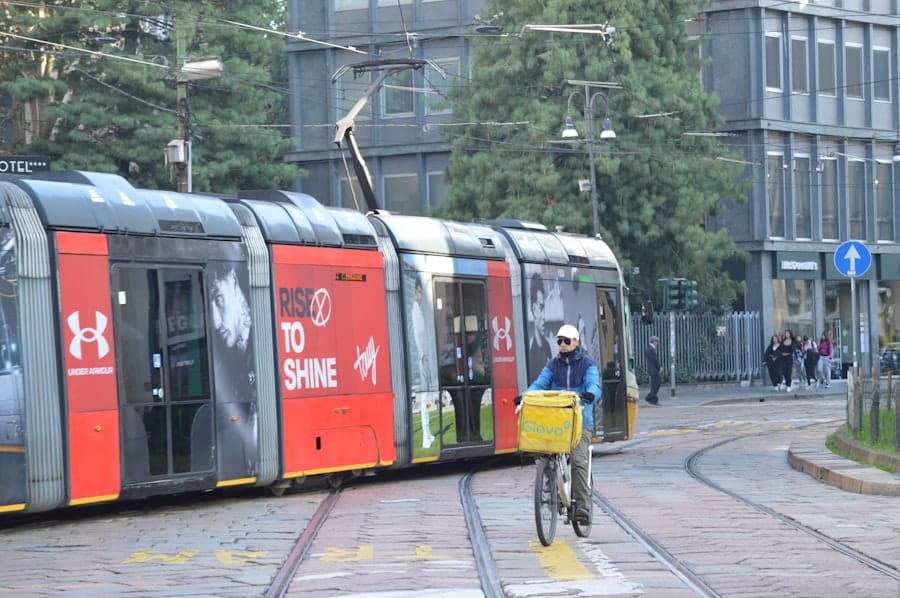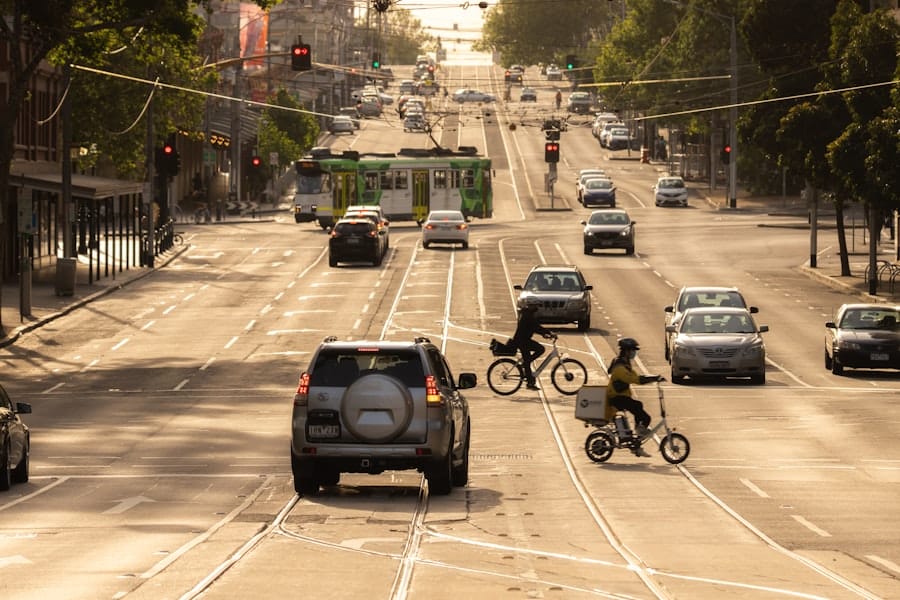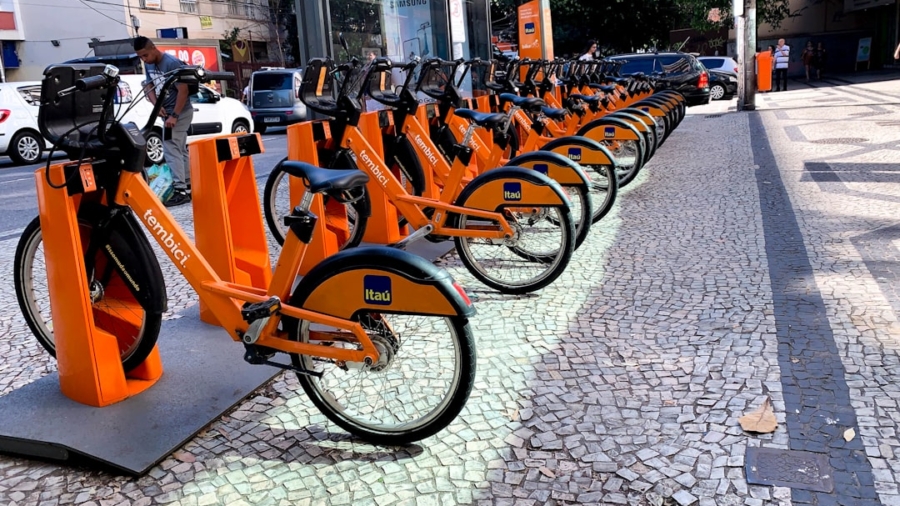The rapid advancement of artificial intelligence (AI) has begun to reshape various sectors, with urban mobility systems being one of the most significantly impacted areas. Urban mobility encompasses the various means of transportation available in cities, including public transit, private vehicles, bicycles, and pedestrian pathways. As cities grow and populations swell, the demand for efficient, sustainable, and accessible transportation solutions becomes increasingly critical.
AI technologies, with their ability to analyze vast amounts of data and learn from patterns, offer innovative solutions to the challenges faced by urban mobility systems. AI’s integration into urban mobility is not merely a trend; it represents a paradigm shift in how cities can approach transportation. By leveraging machine learning algorithms, predictive analytics, and real-time data processing, urban planners and transportation authorities can create smarter, more responsive systems.
This transformation is essential for addressing issues such as traffic congestion, pollution, and the need for equitable access to transportation options. As cities continue to evolve, the role of AI in enhancing urban mobility will only become more pronounced.
Key Takeaways
- AI is revolutionizing urban mobility systems by providing innovative solutions to traffic management and optimization.
- The benefits of AI in redesigning urban mobility systems include improved efficiency, reduced congestion, and enhanced safety.
- AI plays a crucial role in public transportation and ride-sharing services by enabling predictive maintenance and demand-responsive routing.
- AI’s influence on infrastructure and city planning is evident through its ability to analyze data and optimize the design and layout of urban spaces.
- The challenges and ethical considerations of AI in urban mobility include privacy concerns, algorithmic bias, and the impact on employment.
The Benefits of AI in Redesigning Urban Mobility Systems
One of the most significant benefits of AI in urban mobility is its capacity to enhance efficiency. Traditional transportation systems often rely on static schedules and fixed routes that may not adapt well to changing conditions. AI can analyze real-time data from various sources—such as traffic cameras, GPS data from vehicles, and social media feeds—to optimize routes and schedules dynamically.
For instance, during peak hours or special events, AI can reroute buses or adjust service frequency based on demand, ensuring that resources are allocated where they are needed most. Moreover, AI can contribute to sustainability efforts within urban mobility systems. By optimizing traffic flow and reducing congestion, AI can help lower greenhouse gas emissions associated with idling vehicles.
Additionally, AI-driven solutions can promote the use of alternative modes of transport, such as cycling or public transit, by providing users with real-time information about the most efficient and eco-friendly options available. This not only benefits the environment but also encourages a cultural shift towards more sustainable transportation practices.
AI’s Impact on Traffic Management and Optimization

Traffic management is a critical component of urban mobility systems, and AI has the potential to revolutionize how cities manage their roadways. Traditional traffic management systems often rely on fixed traffic signals and manual monitoring, which can lead to inefficiencies and delays. In contrast, AI-powered traffic management systems utilize real-time data to adjust traffic signals dynamically based on current conditions.
For example, cities like Los Angeles have begun implementing AI algorithms that analyze traffic patterns to optimize signal timings, resulting in smoother traffic flow and reduced wait times at intersections.
By analyzing historical data alongside real-time inputs, AI can forecast traffic patterns and identify potential congestion points before they occur.
This proactive approach allows city planners to implement measures such as road closures or detours in advance, minimizing disruptions for commuters. Additionally, AI can facilitate better communication between vehicles and infrastructure through vehicle-to-everything (V2X) technology, enabling cars to receive real-time updates about traffic conditions and adjust their routes accordingly.
The Role of AI in Public Transportation and Ride-Sharing Services
Public transportation systems are often the backbone of urban mobility, providing essential services to millions of commuters daily. AI plays a pivotal role in enhancing the efficiency and reliability of these systems. For instance, predictive maintenance powered by AI can analyze data from sensors on buses and trains to identify potential mechanical issues before they lead to breakdowns.
This proactive maintenance approach not only reduces downtime but also improves overall service reliability for passengers. In addition to traditional public transit, ride-sharing services have emerged as a significant player in urban mobility. Companies like Uber and Lyft leverage AI algorithms to match riders with drivers efficiently.
These algorithms consider various factors such as distance, traffic conditions, and rider preferences to optimize pick-up and drop-off locations. Moreover, AI can analyze user behavior to predict demand surges in specific areas at certain times, allowing ride-sharing companies to adjust their driver availability accordingly. This dynamic approach not only enhances user experience but also contributes to reducing congestion by promoting shared rides.
AI’s Influence on Infrastructure and City Planning
The integration of AI into urban mobility extends beyond immediate transportation solutions; it also influences long-term infrastructure development and city planning. Urban planners can utilize AI-driven simulations to model the impact of various transportation scenarios on city layouts. For example, by analyzing data on population density, commuting patterns, and land use, planners can identify optimal locations for new transit hubs or bike lanes that align with community needs.
Moreover, AI can facilitate smarter zoning regulations by analyzing how different land uses interact with transportation networks. This data-driven approach allows cities to create more cohesive urban environments where residential areas are well-connected to commercial centers through efficient transit options. Cities like Singapore have embraced this concept by using AI to inform their urban planning decisions, resulting in a well-integrated transportation network that supports both economic growth and quality of life for residents.
The Challenges and Ethical Considerations of AI in Urban Mobility

Despite the numerous benefits that AI brings to urban mobility systems, several challenges and ethical considerations must be addressed. One significant concern is data privacy.
Ensuring that this data is collected ethically and used responsibly is paramount to maintaining public trust. Cities must establish clear guidelines on data usage while implementing robust security measures to protect sensitive information. Another challenge lies in the potential for algorithmic bias within AI systems.
If not carefully designed and monitored, AI algorithms may inadvertently perpetuate existing inequalities in transportation access. For instance, if an algorithm prioritizes certain neighborhoods over others based on historical data that reflects socioeconomic disparities, it could exacerbate inequities in service availability. To mitigate this risk, it is essential for city planners and developers to engage diverse stakeholders in the design process and continuously evaluate the impact of AI-driven solutions on different communities.
Case Studies of Successful AI Integration in Urban Mobility Systems
Several cities around the world have successfully integrated AI into their urban mobility systems, serving as models for others looking to follow suit. In Barcelona, for example, the city has implemented an AI-based traffic management system that analyzes real-time data from sensors placed throughout the city. This system has led to a significant reduction in congestion levels and improved air quality by optimizing traffic flow and reducing idle times at intersections.
Another notable case is that of Singapore’s Smart Mobility 2030 initiative, which aims to transform the city-state’s transportation landscape through advanced technologies. The initiative includes the deployment of autonomous vehicles (AVs) that utilize AI for navigation and decision-making. By integrating AVs into public transport networks alongside traditional buses and trains, Singapore aims to create a seamless travel experience for residents while reducing reliance on private car ownership.
The Future of AI in Redesigning Urban Mobility Systems
Looking ahead, the future of AI in urban mobility systems appears promising yet complex. As technology continues to evolve, cities will likely see an increased emphasis on integrating autonomous vehicles into their transportation networks. These vehicles will rely heavily on AI for navigation and safety features, potentially transforming how people commute within urban environments.
Moreover, advancements in machine learning will enable even more sophisticated predictive analytics capabilities within urban mobility systems. Cities may harness these capabilities not only for traffic management but also for understanding broader trends in commuting behavior and environmental impacts. This holistic approach could lead to more sustainable urban development strategies that prioritize accessibility and equity.
As cities navigate this transformative landscape, collaboration among stakeholders—including government agencies, private companies, and community organizations—will be crucial for ensuring that AI-driven solutions are implemented effectively and ethically. By embracing innovation while addressing challenges head-on, urban areas can create mobility systems that are not only efficient but also equitable and sustainable for all residents.
In the rapidly evolving landscape of urban mobility, artificial intelligence (AI) is playing a pivotal role in redesigning transportation systems to be more efficient and sustainable. A related article that delves into the technological advancements influencing modern devices is What Makes the Google Pixel Phone Different?. This article explores the unique features of the Google Pixel phone, highlighting how AI-driven innovations are not only transforming smartphones but also have the potential to impact various sectors, including urban mobility. By understanding the integration of AI in everyday technology, we can better appreciate its broader implications for future urban planning and transportation solutions.
FAQs
What is AI?
AI, or artificial intelligence, refers to the simulation of human intelligence in machines that are programmed to think and act like humans. This includes tasks such as learning, problem-solving, and decision-making.
How is AI being used in urban mobility systems?
AI is being used in urban mobility systems to improve transportation efficiency, reduce traffic congestion, and enhance the overall user experience. This includes applications such as traffic prediction, autonomous vehicles, and smart traffic management systems.
What are the benefits of using AI in urban mobility systems?
The use of AI in urban mobility systems can lead to reduced travel times, lower emissions, improved safety, and enhanced accessibility for all members of the community. It can also help cities better understand and respond to the needs of their residents.
What are some examples of AI applications in urban mobility?
Examples of AI applications in urban mobility include ride-sharing algorithms, traffic flow optimization, predictive maintenance for public transportation systems, and the development of autonomous vehicles.
What are the potential challenges of integrating AI into urban mobility systems?
Challenges of integrating AI into urban mobility systems include concerns about data privacy and security, the potential for job displacement in the transportation industry, and the need for regulations and policies to govern the use of AI in transportation.

